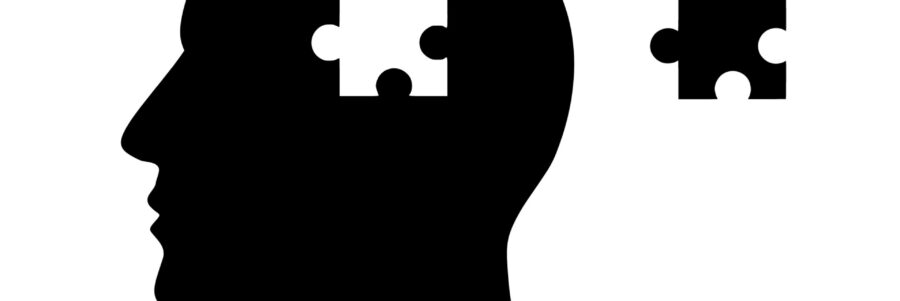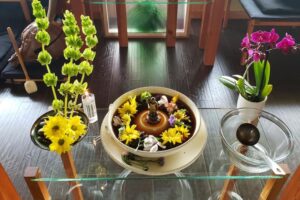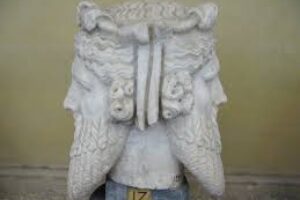
In the midst of recent conflicts between people harboring starkly differing views on the conduct of the teacher-student relationship, my mind kept returning to the famous Zen aphorism and admonition, “Only don’t know.” I don’t recall the source of this teaching, but assume that many Zen masters have used it over time, stating it in different ways. You may have heard the expression, “The Don’t-Know Mind”; or my favorite: “Not knowing you know is best” —again, not attributed, thanks to my poor scholarship.
As an aside, my excuse for not attributing quotes is that great masters and writers of the past (e.g. Dogen Zenji) often freely quoted in order to make a point, though Master Dogen frequently mentions his sources in the text. With brush and rice-paper, mind you. I suppose that the extensive foot- and end-noting in vogue today is more or less a scholarly necessity, a requirement if one is to be taken seriously in the competitive arena of scholarhood. But in an age when most readers can google or otherwise look up virtually anything the writer can put on paper, all this footnoting seems a bit of an anachronism.
Zen, I think, teaches skepticism of one’s own self-image, mainly.
zenkai taiun michael elliston, roshi
While this notion of not knowing is regarded as a high level of insight in Zen, accomplished only after exhausting the many customary ways of knowing — and thus a spiritual accomplishment — the idea may be usefully implemented on a less exalted level. In the daily interaction with fellow travelers at work, at home, or at the Zen center, we make a lot of unconscious assumptions about their behavior and underlying motives. Here is where granting the benefit of the doubt can become an actionable, and beneficial, form of only-not-knowing.
One of our senior Disciples in the Silent Thunder Order network of Sanghas developed a mantra for herself, in order to temper her admitted tendency to see others in an overly critical, even harsh, light. When she found herself doing so, she would sub-vocalize a chant: I could be wrong; I could be wrong; I could be wrong. I suggested to her, years later, that she adopt the corollary, I could be right; I could be right; I could be right.
Accepting that one could be wrong, and that one could also be right — simultaneously — would be the Zen way to go, I think. Master Dogen’s admonition in Fukanzazengi to “stop the functions of the mind” by setting aside all thoughts of good and evil, right or wrong, is of course intended to be followed while on the cushion, where it is actually doable. But it is difficult to apply when off the cushion, in the hurly-burly of everyday life. It becomes nearly impossible during times of interpersonal conflict.
As I have mentioned before, we can discuss the behavior of others without considering it as their fault, but it is an extremely slippery slope.
I think what I have learned is that I generally have no certain idea what motivates people to do and say the things they do and say. Including myself, sometimes. But I do have faith that over time it will become clear, if only we keep returning to the cushion. We can chant I could be wrong — and probably am and I could be right — but probably am not all day long and until doomsday. But we may never know for sure, when it comes to what is in the minds and hearts of others. We can only know our own hearts, and even that is another slippery slope. Zen, I think, teaches skepticism of one’s own self-image, mainly.
But let’s set aside the social dimension for the nonce, and examine more personal aspects of the don’t-know-mind while on the cushion.
What is it that we think we know for sure, when we enter into Zen meditation? Even to say that one enters into Zen meditation contains a lot of unspoken assumptions. It asserts the familiar and classical fallacy that there is a person who is doing the zazen. It suggests that the time, causes and conditions before we sit in zazen are separate and apart from those when we are sitting. It assumes that there is something called Zen meditation that we can indeed enter into. It establishes that our meditation is not just meditation, but Zen meditation. It follows that there is something called Zen meditation that is not the same as other meditations. It also implies that, Zen or not, there is actually something called meditation. All of these, while bearing a degree of conventional truth, are fallacies.
It can also be argued that the notions that there is not something called Zen meditation to enter into, or that it is the same as all other meditations, are also fallacies. It is easier for us to fall for some fallacies than for others. It is easy to believe (in the non-religious sense, or philosophically) that Zen meditation is different from other meditations, indeed superior. Why? Because it is the meditation milieu of OUR choice. It must be superior, if we devote our precious time and effort to it — rather than to Transcendental Meditation, for example. TM is so yesterday, so demeaned by its former celebrity and ubiquity.
So, yes, we can only-don’t-know ourselves into complacency and a self-aggrandizing view, even of our own zazen. However, if we stick with zazen, this view will not last. Nothing survives zazen, nothing that we bring along, going in. Eventually, zazen will disabuse us of even the most obsessive and cloying of self-regarding assumptions.
According to Master Dogen, in real zazen we “forsake all delusive relationships, setting everything aside.” And, “thus stopping the functions of your mind, give up even the idea of becoming a buddha.” If we can do so, when we sit on the cushion, for example, there are no more troubling teacher-student relations. Stopping the functions of our mind, however, is not something we can do so easily. Or do, at all. Beyond thinking it is non-thinking; beyond knowing, and beyond doing, it must become non-doing.
One of the more subtle — one might say insidious — issues that comes up in formal training, with its implicit goal of dharma transmission, is what we might call the robe syndrome. The wagesa, rakusu, and okesa, as vestments, imply advancement through discrete stages of training on what psychology would refer to as a developmental model, the linear idea that we start at “A,” proceed to “B,” and eventually end up at “Z.”
There is nothing intrinsically incorrect or harmful about such a model, until it begins to infect the don’t-know mind, and we begin to think, on a subliminal level, that we do actually know. We may think, for example, or think we know, that the folks in the wagesas are not as advanced as those in the rakusus, let alone those in the okesas. And there is simply no touching the muckety-mucks in the brown or saffron robes.
In this instance of form over substance, the only-don’t-know mind would suggest that we withhold any judgment. It may be that vestments actually do mean something; it may be that they don’t. Certainly, they do not likely mean what we take them to mean.
Speaking of costume — and our cultural attachments to it — in business, there is an old saying from the boardroom, something like, “I would really like to hear what you have to say, but your outfit is speaking too loudly.” This points to clothing as messaging system, the appropriateness of which signals our degree of seriousness, down to the type of necktie, whether or not we are clean-shaven, wear too much makeup, et cetera. When we go out looking for a job, we get “suited up and tied down.” Of course, you can’t tell a book by its cover, but the cover (or dust jacket) may be what gets you to open the book.
Those in the know understand that vestments, such as robes, are nothing but fingers pointing. They are pointing to the actual spiritual raiment, known as the essence body, the Dharmakaya. As symbol, the robe is the object of a great degree of respect. The actual essential body is born with us as our birthday suit, but transcends the physical body.
For most of us, fingers pointing at our naked body would definitely be doing so in some degree of derision, rather than respect. Certainly not in awe, or holy agape. But the okesa and its abbreviated versions call upon us to regard with some reverence that which the Chinese masters call “this stinking skin sack,” perhaps only in order to mitigate against our proclivity for self-adoration.
The Original Body is not the body we work out, tone, train, tan, and otherwise worship. This object of our affection is called the Nirmanakaya, the transformation body, perhaps because it is in continual transformation, defying our utmost efforts to keep it young.
Quoting from Mahayana Buddhism, The “Great Vehicle” by Barbara O’Brien, from the web site About.com Guide:
The Trikaya
The Mahayana doctrine of the Trikaya says that each Buddha has three bodies. These are called the dharmakaya, sambogakaya and nirmanakaya. Very simply, dharmakaya is the body of absolute truth, sambogakaya is the body that experiences the bliss of enlightenment, and nirmanakaya is the body that manifests in the world.
Another way to understand the Trikaya is to think of the dharmakaya as the absolute nature of all beings, sambogakaya as the blissful experience of enlightenment, and nirmanakaya as the embodiment of dharmakaya in human form.
(http://buddhism.about.com/od/mahayanabuddhism/a/aboutmahayana.htm)
Set in the context of rationality enshrined by The Enlightenment (yes, that other one), this notion of the Trikaya, or three bodies, stands as a real litmus test for the only-don’t-mind of the practicing Westerner. We can wrap our minds around the Nirmanakaya; the Dharmakaya — okay, we get it as an aspiration going beyond the stinking skin sack; but the Sambohakaya? Bliss body? Aside from the fact that Zen is definitely not about finding one’s bliss, it is an affront to the rational mind, to contemplate that Buddhism propagates a notion so eerily similar to the Trinity of Christianity. But there it is.
Here, of course, the buddha in question is you, so you have to take it personally. Perhaps the fitting application of the don’t-know mind in confronting this tripartite mystery is of the variety of throwing the hands up. Or maybe we can attempt to construct more reasonable models that allow some self-respecting acceptance of such a mystical notion, in spite of our built-in, no-nonsense resistance.
For example, if we can embrace the Nirmanakaya as the one — ever-changing but familiar physical body (form); the Dharmakaya or essence body as the sub rosa jellyfish of the many — totally connected with the universal matrix, the inner and outer ocean of cellular interactions that actually constitute the (apparently) single body (emptiness); then we might see Sambhogakaya as the unifying consciousness principle — that very awareness of two fundamental polarities that are not fundamentally separate. Aghast in its joyful recognition of the ungraspable nature of the concrete reality of the first two bodies as inseparable and complementary (even though clearly and merely conceptual); then we may feel the enjoyment body as the non-rational, what-else-is-a-person-to-do, all-encompassing embrace of the “exploding plastic inevitable” (Robert Rauschenberg, Happenings), that is the unknowable, yet intimately known, reality.
How else is a buddha to live in the material world? Only by don’t-knowing.
Frankly, we don’t even know how big we are. Or how small. Some of us may get too big for our britches, but it is humbling to recognize that we don’t really know the distance from the tip of our nose to the floor, sitting in zazen. “Three feet”? What, exactly, is that? Our familiar measurements are fallacies — cartoons, caricatures, and jokes — of human agreement. Bite this cookie, get big; bite another one, get small (thank you Charles Lutwidge Dodgson). The universe is quietly laughing at us behind our backs. Do you hear it?
For your further consideration: we also do not know how far it is from our eyes to the “point” upon which our gaze is fixed, while sitting in zazen. We say, “three to nine feet in front of where you are sitting,” which simply points out the absurdity of it. The point upon which our gaze is fixed may as well be on the other side of the universe. Limited only by as far as the “eye of practice” can reach (thank you, Dogen).
Let us all continue, giving up our precious knowing, waking to what cannot be known.









